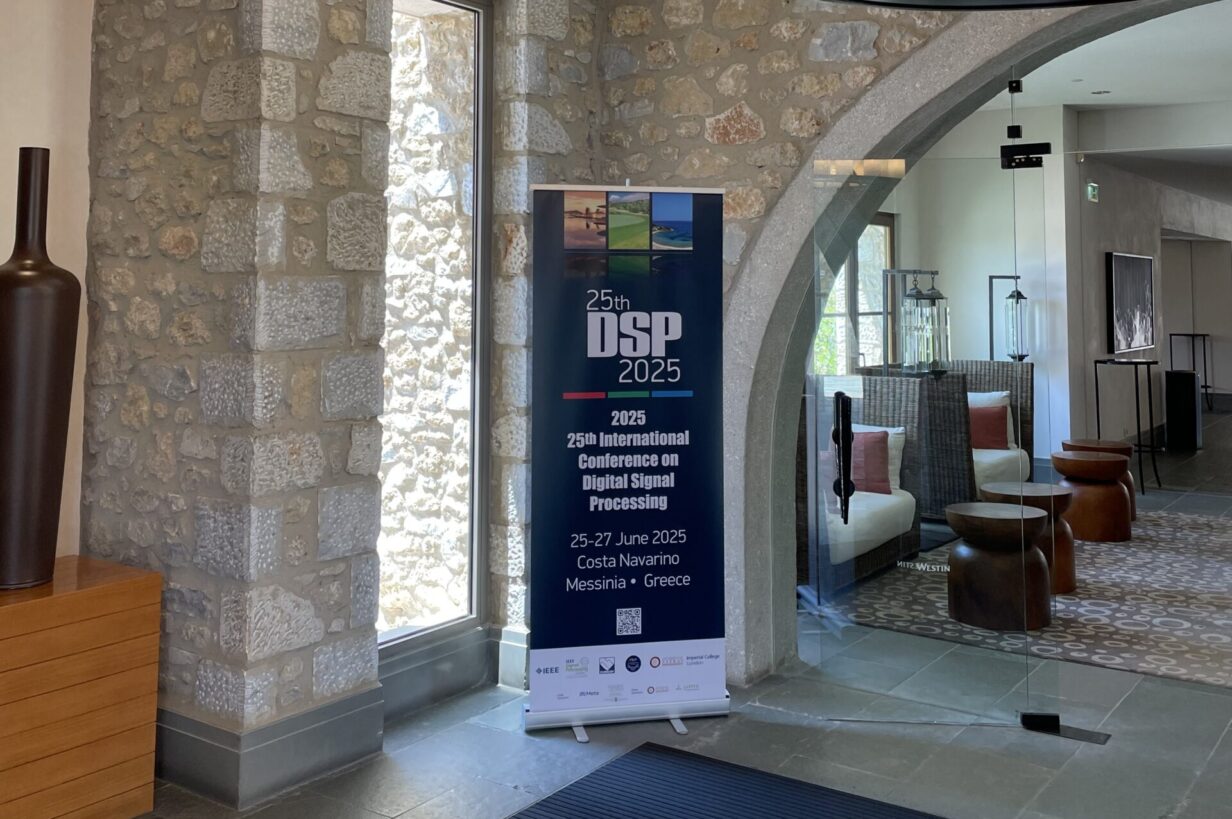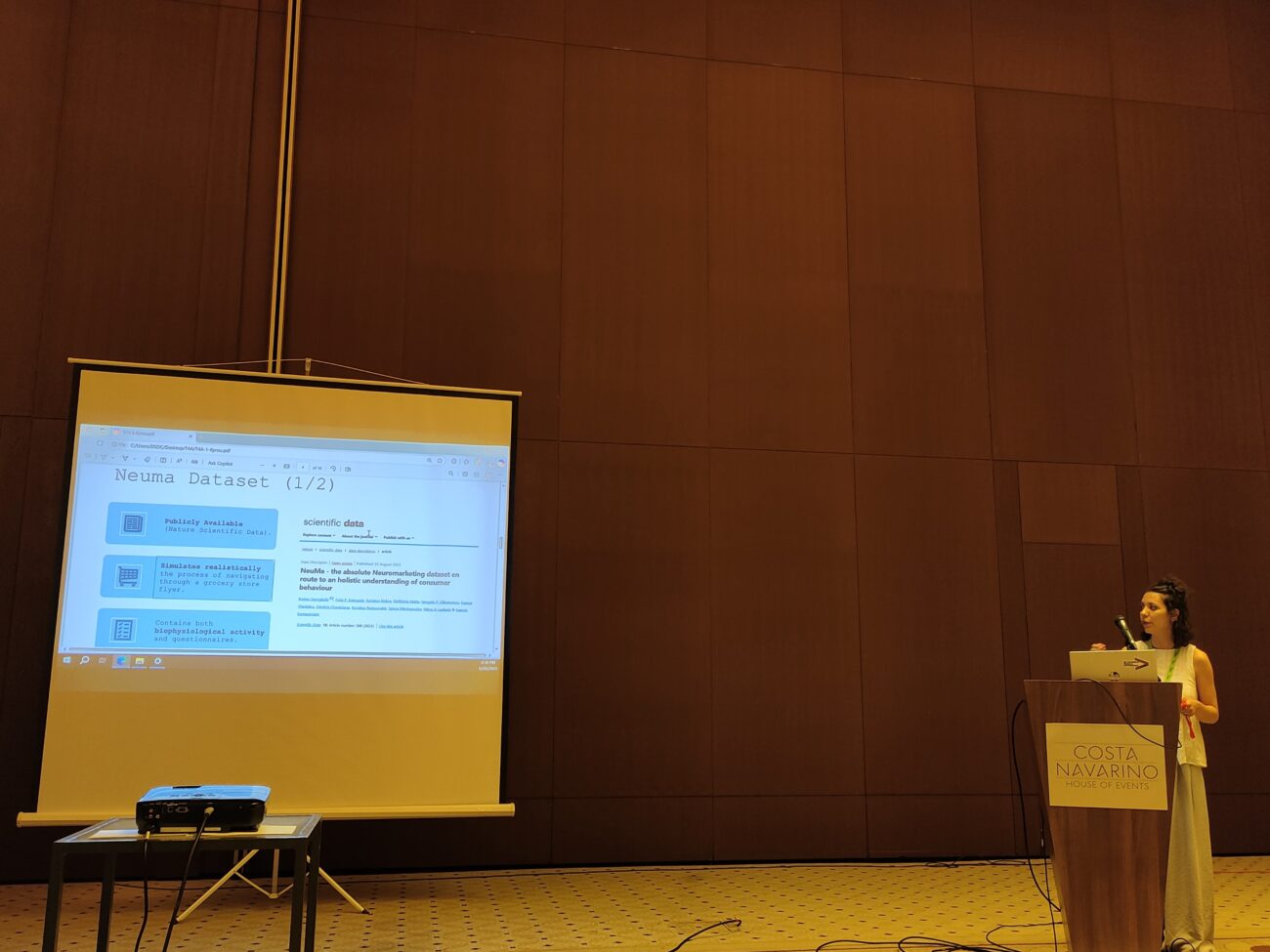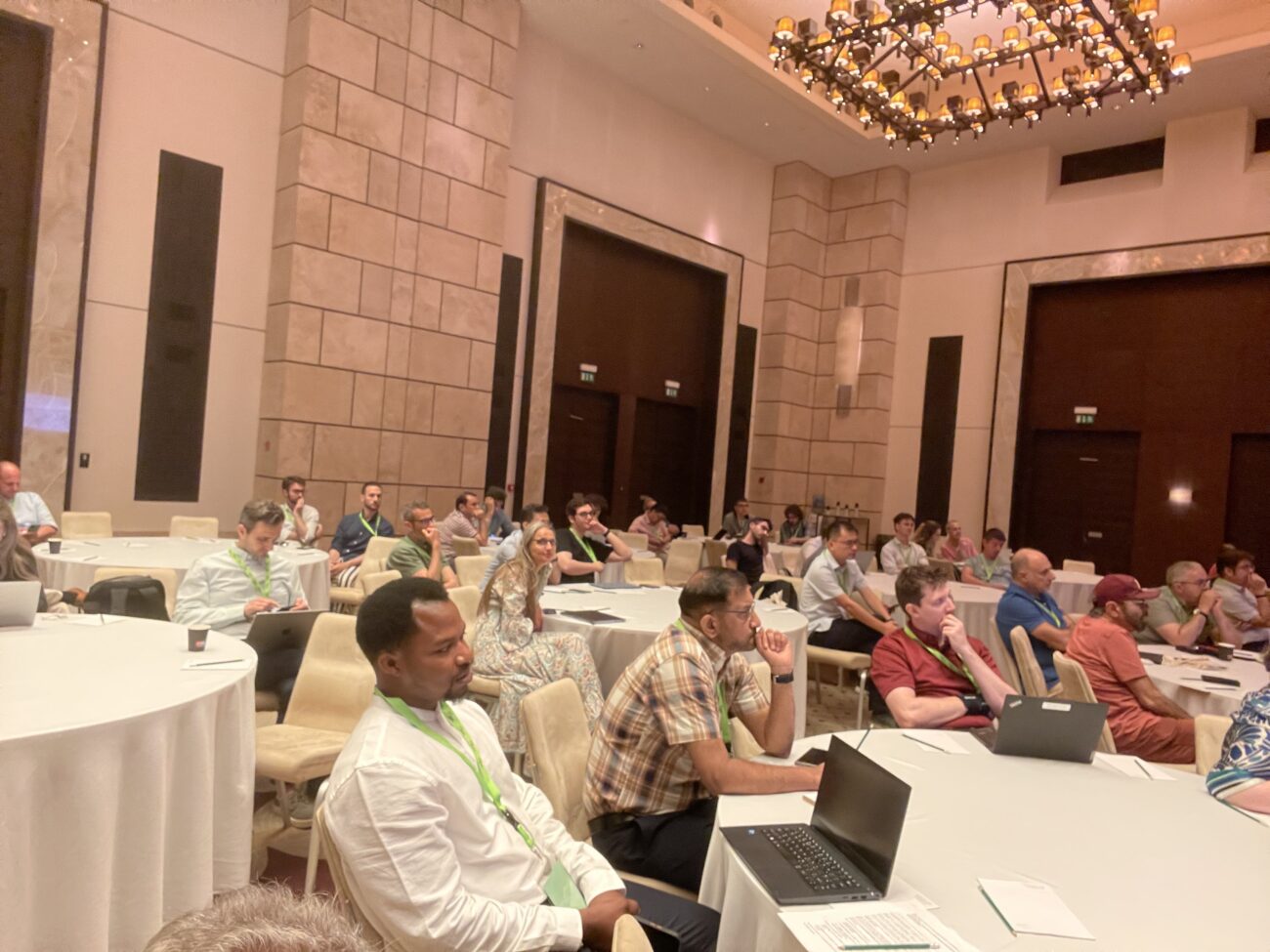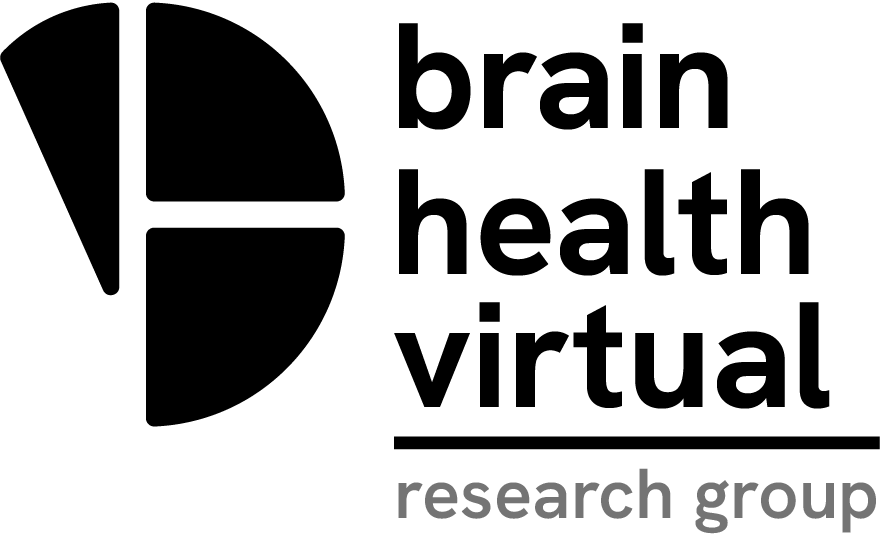
BHV presents two papers at the 25th International Conference on Digital Signal Processing (DSP 2025)
EEG for Art and Marketing – Two Paths to Understanding Human Preference
Our research group presented two papers that explore the intersection of electroencephalography (EEG) signal analysis, user preferences, and machine learning at the 25th International Conference on Digital Signal Processing (DSP 2025). Both studies aim to deepen our understanding of human preferences through brain activity on two different domains- visual art and neuromarketing.

Decoding Visual Art Preferences from EEG Signals Using Wavelet Scattering Transform
How do our brains respond to art? In this work, we introduce an EEG-based framework that classifies whether a person likes or dislikes a visual artwork such as a painting, sculpture, or photograph. To achieve this, we employed the Wavelet Scattering Transform (WST) for feature extraction, a method that captures stable, translation-invariant representations of EEG signals without relying on learnable parameters. These features were then fed into a Support Vector Machine (SVM) classifier, which performed reliably despite the modest dataset size, often a challenge in EEG-based studies.
Key Findings
Our results show that EEG signals can indeed reveal aesthetic preferences with promising accuracy. By distinguishing between neural responses to liked versus disliked artworks, the system was able to classify visual user preferences. The WST proved especially powerful in extracting meaningful and low-variance features, making it a strong alternative to deep learning models that typically require large amounts of data and extensive training.
Why It Matters
This work contributes to the growing field of neuroaesthetics by offering a practical model for decoding neural responses to visual art. Potential applications include adaptive museum guides that respond to visitor preferences, personalized digital exhibitions based on real-time brain activity, and ethical and accessible brain-computer interfaces (BCIs) that don’t rely on intrusive or data-heavy approaches.
Our Recommendations for Future Action
Future work will investigate the generalizability of the proposed framework across various stimulus modalities, including auditory and audiovisual inputs, to evaluate its robustness in multisensory aesthetic experiences. This study paves the way for developing EEG-based BCIs that enable passive user interaction in digital art curation and interactive multimedia environments.
Enhancing EEG-Based Neuromarketing with Attention Mechanism and Riemannian Features
In this paper, we propose a novel EEG decoding framework that combines Riemannian Geometry-based features with self-attention mechanisms. The proposed approach leverages Spatial Covariance Matrices (SCMs) computed across multiple frequency bands to capture brain connectivity during a realistic shopping scenario. These features are then fed into an attention-based network that identifies the most informative patterns for classifying consumer buying intentions.
Key Findings
Our model achieved significantly improved performance on the NeuMa dataset, outperforming traditional approaches such as SVM, k-NN, standard Riemannian models, and SPDNet. The integration of attention mechanisms enabled more precise and interpretable feature selection, while Riemannian alignment and data augmentation improved performance across subjects.
Why It Matters
This work highlights EEG’s potential in decoding subconscious consumer behavior, offering an objective alternative to traditional self-report methods or behavioral observation.
Our Recommendations for Future Action
Future extensions could focus on extending the framework to multi-class classification, exploring multimodal fusion with eye-tracking, testing alternative data augmentation strategies, and deploying the system for real-time neuromarketing applications, enabling adaptive consumer engagement strategies.

Both studies presented at DSP 2025 reflect a common goal: leveraging EEG signal analysis to decode human preferences in real-world settings. From aesthetic appreciation to consumer behavior, these approaches move us toward more responsive, personalized, and human-centered technologies.
Read the full Papers
“Decoding Visual Art Preferences from EEG Signals Using Wavelet Scattering Transform” by Kyrou, M.; Laskaris, N.A.; Petrantonakis, P.C.; Kalaganis, F.P.; Georgiadis, K.; Nikolopoulos, S.; and Kompatsiaris I., is available here: 10.1109/DSP65409.2025.11075075
“Enhancing EEG-Based Neuromarketing with Attention Mechanism and Riemannian Features” by Kalaganis, F.P.; Georgiadis K.; Nousias, G.; Oikonomou, V.P.; Laskaris, N.A.; Nikolopoulos S.; and Kompatsiaris I., is available here: 10.1109/DSP65409.2025.11075055


